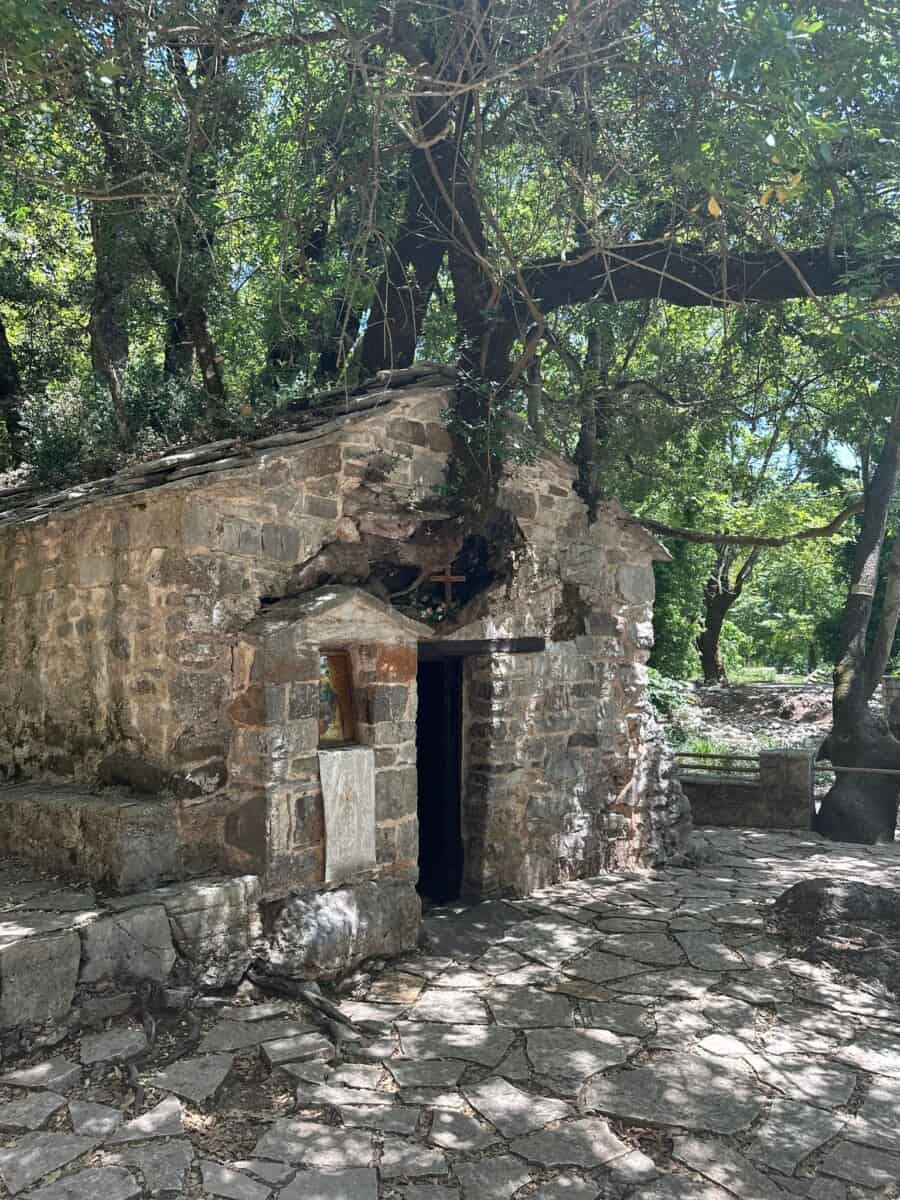

The church of Agia Theodora Vasta in Arkadia, Greece
Even more amazing is its tiny barrel-vaulted interior, with no sign of the trees or roots except for one wispy bit of green. Another fascinating fact about the location is that a river runs beneath this church and irrigates the trees.
Agia Theodora’s church has become a popular pilgrimage site for Greeks, and her feast day is today, September 11, when thousands and thousands of people from all across Greece will travel here to pray. Agia Theodora Vasta is known to have performed many miracles for those who pray to her.
The Holy Virgin, Martyr Theodora of Vasta, grew up in a village where the family would send the sons to fight in the army against the enemy. Having no boys in the family, Theodora decided to join the army to save her father from having to do so. Disguising herself as the soldier Theodore, she soon became one of the most valiant and brave soldiers.
A woman soon developed lustful feelings for “Theodore” and claimed that he had impregnated her. Theodora was commanded to either marry the woman or be condemned to death. Theodora did nothing to prove her innocence (as easy as this would be), but she placed her hope in God.
Being condemned to death, before her execution, she prayed, “Let my body become a church, my blood a river, and my hair the trees.” On the spot where she was martyred, a spring gushed forth, which flooded to become a river that still exists today.
The faithful built a small church over her spot of martyrdom where 17 enormous trees (some weighing over 1 tonne) began growing on the church’s roof. The 17 trees symbolised her age when she was martyred. Countless scientific studies have occurred to uncover the mystery of 1) how the small church supports such enormous trees and 2) how these trees grew and continue to survive with no evidence of any root system reaching the ground.
Scientists have taken x-rays of the church walls, showing no signs of root formation anywhere. High-frequency geo-radar also indicated that the roots are all hair thin and somehow thread their way inside the church walls to get nourishment from the spring underneath it – quite a miracle all in itself.
Erica Kontos, a Greek-American Senior Director at the NBA, has been named to Forbes 30…
On Good Friday, the coastal villages of Greece’s Peloponnese transform into scenes of profound faith…
Examination of the letters indicates that the style most closely matches that of the 1st…
"On April 18th, 1821, the island of Samos officially declared its participation in the burgeoning…
Olympiacos, Greece’s reigning champions, are set to join Europe’s football elite in the 2025-26 UEFA…
On Holy Thursday, April 17, 2025, over 92,000 vehicles streamed out of Attica as Greeks…